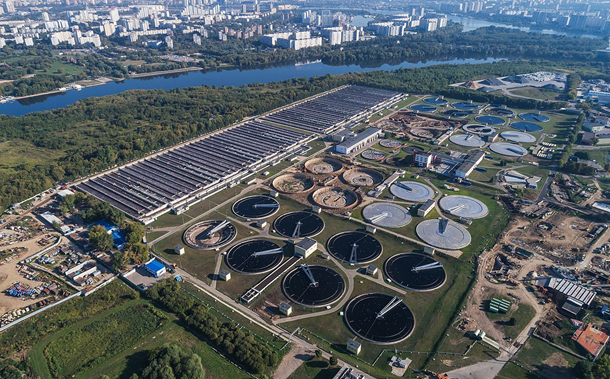Concrete Strength and Aggregate Properties: In-Depth Analysis of Four Sources
Downloads
Doi:10.28991/CEJ-2024-010-04-016
Full Text:PDF
Downloads
[2] Alghamdi, S. J. (2023). Determining the mix design method for normal strength concrete using machine learning. Journal of Umm Al-Qura University for Engineering and Architecture, 14(2), 95–104. doi:10.1007/s43995-023-00022-4.
[3] Wang, L., Zhou, H., Zhang, J., Wang, Z., Zhang, L., & Nehdi, M. L. (2023). Prediction of concrete strength considering thermal damage using a modified strength-maturity model. Construction and Building Materials, 400, 132779. doi:10.1016/j.conbuildmat.2023.132779.
[4] Naderi, M., & Kaboudan, A. (2021). Experimental study of the effect of aggregate type on concrete strength and permeability. Journal of Building Engineering, 37, 101928. doi:10.1016/j.jobe.2020.101928.
[5] Barham, W. S., Taleb Obaidat, Y., & Wael Qublan, A. (2023). Effect of maximum coarse aggregate size upon shear strengthening of RC beams using NSM-CFRP strips. Structures, 53, 652–663. doi:10.1016/j.istruc.2023.04.070.
[6] Kozul, R., & Darwin, D. (1997). Effects of Aggregate Type, Size and Content on Concrete Strength and Fracture Energy. SM Report No. 43, University of Kansas, Kansas, United States.
[7] Ezeldin, A. S., & Aitcin, P. C. (1991). Effect of coarse aggregate on the behavior of normal and high-strength concretes. Cement, Concrete and Aggregates, 13(2), 121–124. doi:10.1520/cca10128j.
[8] Giaccio, G., Rocco, C., Violini, D., Zappitelli, J., & Zerbino, R. (1992). High-strength concretes incorporating different coarse aggregates. ACI Materials Journal, 89(3), 242–246. doi:10.14359/2568.
[9] Lee, G. C., Shih, T. S., & Chang, K. C. (1988). Mechanical Properties of Concrete at Low Temperature. Journal of Cold Regions Engineering, 2(1), 13–24. doi:10.1061/(asce)0887-381x(1988)2:1(13).
[10] Giaccio, G., Rocco, C., & Zerbino, R. (1993). The fracture energy (GF) of high-strength concretes. Materials and Structures, 26(7), 381–386. doi:10.1007/BF02472938.
[11] Talaat, A., Emad, A., Tarek, A., Masbouba, M., Essam, A., & Kohail, M. (2021). Factors affecting the results of concrete compression testing: A review. Ain Shams Engineering Journal, 12(1), 205–221. doi:10.1016/j.asej.2020.07.015.
[12] Cordon, W., & Gillespie, A. (1963). Variables in Concrete Aggregates and Portland Cement Paste which Influence the Strength of Concrete. ACI Journal Proceedings, 60(8), 1029–1052. doi:10.14359/7889.
[13] Li, Q., & Song, Z. (2023). Prediction of compressive strength of rice husk ash concrete based on stacking ensemble learning model. Journal of Cleaner Production, 382, 135279. doi:10.1016/j.jclepro.2022.135279.
[14] Beshr, H., Almusallam, A. A., & Maslehuddin, M. (2003). Effect of coarse aggregate quality on the mechanical properties of high strength concrete. Construction and Building Materials, 17(2), 97–103. doi:10.1016/S0950-0618(02)00097-1.
[15] BS 812-1:1975. (1975). Testing aggregates. Methods for determination of particle size and shape. British Standard, London, United Kingdom.
[16] ASTM C136/C136M-14. (2020). Standard Test Method for Sieve Analysis of Fine and Coarse Aggregates (2020). ASTM International, Pennsylvania, United States. doi:10.1520/C0136_C0136M-14.
[17] ASTM C127-15. (2024). Standard Test Method for Relative Density (Specific Gravity) and Absorption of Coarse Aggregate (2024). ASTM International, Pennsylvania, United States. doi:10.1520/C0127-15
[18] ASTM C29/C29M-97. (2017). Standard Test Method for Bulk Density ("Unit Weight”) and Voids in Aggregate. ASTM International, Pennsylvania, United States. doi:10.1520/C0029_C0029M-17A.
[19] ASTM C131-06. (2010). Standard Test Method for Resistance to Degradation of Small-Size Coarse Aggregate by Abrasion and Impact in the Los Angeles Machine. ASTM International, Pennsylvania, United States. doi:10.1520/C0131_C0131M-20.
[20] Cook, M. D., Ghaeezadah, A., & Ley, M. T. (2018). Impacts of Coarse-Aggregate Gradation on the Workability of Slip-Formed Concrete. Journal of Materials in Civil Engineering, 30(2). doi:10.1061/(asce)mt.1943-5533.0002126.
[21] Taylor, P. C., & Voigt, G. F. (2007). Integrated materials and construction practices for concrete pavement: A state-of-the-practice manual, No. FHWA HIF-07-004, Federal Highway Administration, Washington, United States.
[22] Shilstone, J. M. (1991). Performance specifications for concrete pavements. Concrete International, 13(12), 28–34.
[23] Richardson, D. N. (2005). Aggregate Gradation Optimization--Literature Search. Technical Report RDT 05-001, University of Missouri, Columbia, United States.
[24] Abrams, D. A. (1922). Proportioning Concrete Mixtures. ACI Journal Proceedings, 18(2), 174-181. doi:10.14359/15683.
[25] Neville, A. M. (2011). Properties of concrete. Prentice Hall, New Jersey, United States.
[26] Fuller, W. B., & Thompson, S. E. (1907). The Laws of Proportioning Concrete. Transactions of the American Society of Civil Engineers, 59(2), 67–143. doi:10.1061/taceat.0001979.
[27] Harrison, P. J. (2004). For the ideal slab on ground mixture. Concrete international, 26(3), 49-55.
[28] Day, K. W. (2006). Concrete Mix Design, Quality Control and Specification. CRC Press, London, United Kingdom. doi:10.4324/9780203967874.
[29] Palassi, M., & Danesh, A. (2016). Relationships Between Abrasion/Degradation of Aggregate Evaluated from Various Tests and the Effect of Saturation. Rock Mechanics and Rock Engineering, 49(7), 2937–2943. doi:10.1007/s00603-015-0869-9.
[30] Kahraman, S., & Fener, M. (2007). Predicting the Los Angeles abrasion loss of rock aggregates from the uniaxial compressive strength. Materials Letters, 61(26), 4861–4865. doi:10.1016/j.matlet.2007.06.003.
[31] Mills-Beale, J., You, Z., Williams, R. C., & Dai, Q. (2009). Determining the specific gravities of coarse aggregates utilizing vacuum saturation approach. Construction and Building Materials, 23(3), 1316–1322. doi:10.1016/j.conbuildmat.2008.07.025.
[32] Kandhal, P. S., Mallick, R. B., & Huner, M. (2000). Measuring bulk-specific gravity of fine aggregates: Development of new test method. Transportation Research Record, 1721(1721), 81–90. doi:10.3141/1721-10.
[33] Roquier, G. (2023). Estimation of voids in a multi-sized mineral aggregate for asphalt mixture using the Theoretical Packing Density Model. Construction and Building Materials, 367, 130302. doi:10.1016/j.conbuildmat.2023.130302.
[34] Hu, J., & Wang, K. (2007). Effects of size and uncompacted voids of aggregate on mortar flow ability. Journal of Advanced Concrete Technology, 5(1), 75–85. doi:10.3151/jact.5.75.
[35] BS 812-112. (1990). Testing aggregates. Method for determination of aggregate impact value (AIV). British Standards Institution, 812-112.
[36] Al-Harthi, A. A. (2001). A field index to determine the strength characteristics of crushed aggregate. Bulletin of Engineering Geology and the Environment, 60(3), 193–200. doi:10.1007/s100640100107.
[37] Abdul Awal, A. S. M., Mohammadhosseini, H., & Hossain, M. Z. (2015). Strength, modulus of elasticity and shrinkage behaviour of concrete containing waste carpet fiber. International Journal of Geomate, 9(1), 1441–1446. doi:10.21660/2015.17.4345.
[38] JTG E42-2005. (2005). Test methods of aggregate for highway engineering. Research Institute of Highway Ministry of Transport, Beijing, China.
[39] BS 812-110. (1990). Testing Aggregates. Methods for Determination of Aggregate Crushing Value (ACV). British Standards Institution, London, United Kingdom.
[40] LajÄin, D., & GuzoŠˆová, V. (2023). Identification of Knowledge Management Barriers in Scientific R&D Projects in Czech Academic Environment. HighTech and Innovation Journal, 4(1), 19-36. doi:10.28991/HIJ-2023-04-01-02.
[41] ASTM C805/C805M-18. (2019). Standard test method for Rebound Number of Hardened Concrete. ASTM International, Pennsylvania, United States. doi:10.1520/C0805_C0805M-18.
- Authors retain all copyrights. It is noticeable that authors will not be forced to sign any copyright transfer agreements.
- This work (including HTML and PDF Files) is licensed under a Creative Commons Attribution 4.0 International License.![]()














